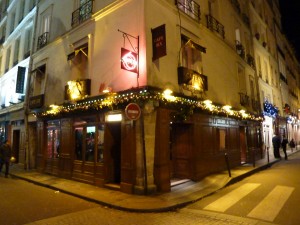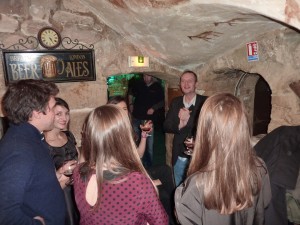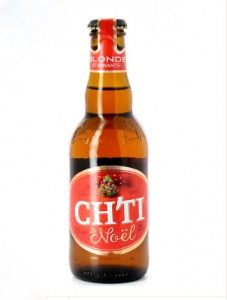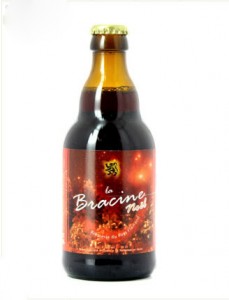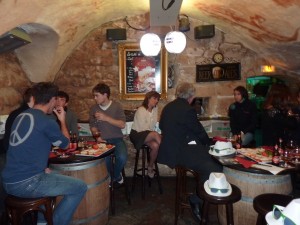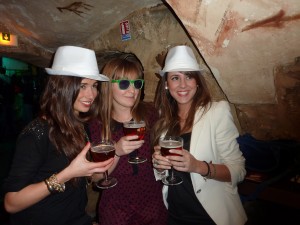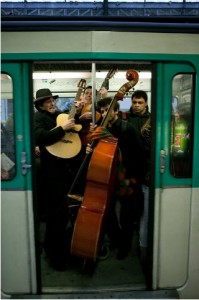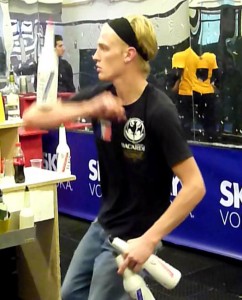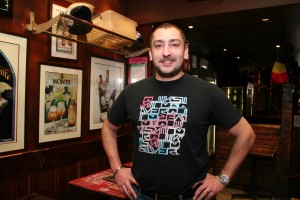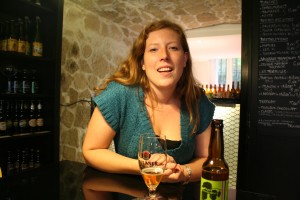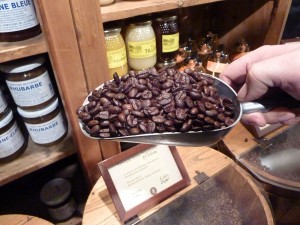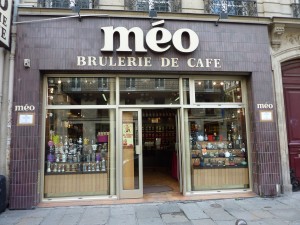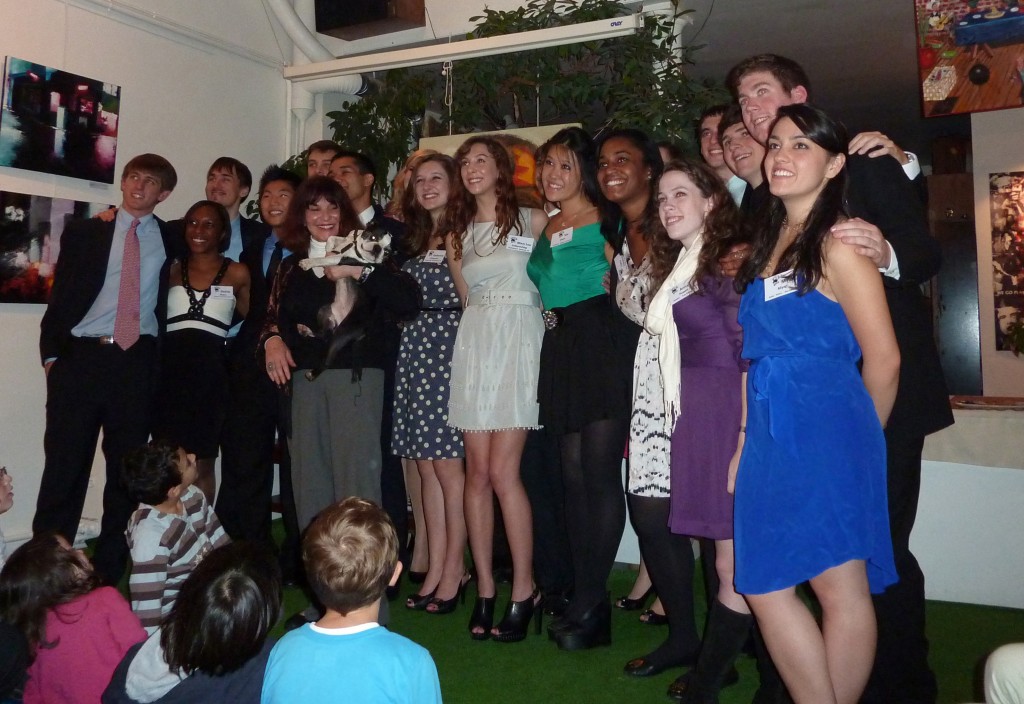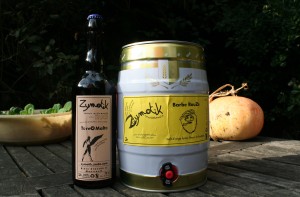Last Wednesday night found me at a bistrot called Café Six, where I participated in a tasting of four Christmas beers. The event was organized by Saveur Bière, a company that sells beer and beer-dispensing equipment on the Internet. The tasting took place under the vaulted ceiling of the bistrot’s 16th century cellar.
While waiting for other participants to arrive and the event to begin, I was served a glass of Fisher de Noël, a French beer from Alsace. (The Fisher brewery, founded in 1821 in Strasbourg, is now produced by Heineken in a suburb of Strasbourg called Schiltigheim.) The beer was served from the tap. Dark in color with a frothy head, it had a slightly spicy flavor with no bitterness. One of the assistants at the tasting ventured that the beer expressed a hint of the aroma of orange peel. This was a brew that I could have kept drinking for the rest of the evening.
Once the tasting started, everyone was served a second glass of Fisher de Noël.
During the tasting, François Devos—a bièrologue from Lille—gave a presentation on the finer points of beer making and beer tasting. His talk was comprehensive and I was impressed by the depth and range of his knowledge.
One of the subjects that Mr. Devos expounded upon was the tradition of Christmas beer. He explained that there are several legends around the origins of this custom and told us the one about brewers who, at the end of the year, would take the last grains that were in the storage bin, brew them, and offer the beer to their clients as étrennes (New Year gifts). Since the cereal was a mixture of light and dark grains from different harvests, the resulting beer was darker and more robust than regular beer. Sometimes spices were added to the brew.
The second beer served was Affligem de Noël, another Heineken beer, this one from Belgium. Served from the tap in a wide-mouth glass, it had a frothy head and the clear, rich color of pomegranate. While I find the regular Affligem that I purchase at restaurants to have the subtle taste of anise, this one had a spicy and fruity flavor.
Mr. Devos continued his presentation by discussing the proper way to taste beer. It is similar to wine tasting, including the finish, where it is swirled in the mouth with a vigorous movement of cheeks and jaw to capture all the subtle flavors and aromas that are present in the brew. One might not want to make these bizarre grimaces on a first date!
The next beer was an artisanal top-fermented brew produced in French Flanders by Brasserie Castelain. Called Ch’ti Blonde de Noël, it was served from a 25cl bottle. The beer displayed a pale rose color; expressed a full, robust flavor; and measured 7.5% in alcohol content.
Mr. Devos asked participants if they knew the maximum amount of alcohol a beer could contain. Someone guessed 15%, whereupon he talked about a German “ice beer” that he had tasted that had 55% alcohol content. This is achieved by a process called “fractional freezing” that uses progressively colder temperatures to distill the alcohol. The German beer Eisbock (15%) is an example of beer created by freeze distillation.
The last beer that we tasted was Bracine de Noël, another French Flemish artisanal beer measuring 7.5% in alcohol. This was the strongest-tasting beer of the four that we tasted. Served from a bottle, it had a sweet, cherry-like aroma, but a surprising chocolate-like flavor. Cloudy and dark-brown in color, it tasted mildly bitter.
Mr. Devos asked participants if they knew what one ingredient beer was lacking to make it a perfect food. I guessed calcium; someone else guessed another element. Then I remembered that I had been told that beer lacked fat, matière grasse. This was the correct response. A fellow taster told me that his grandmother advocated adding the yolk of an egg to a glass of dark beer and drinking it for breakfast. A perfect way to start the day!
About 20 to 25 persons attended the tasting. As far as I could tell, I was the only Anglophone in the group. After the first two rounds of beer, sandwiches were served and some people went outside for a smoke break. Striking up conversations with strangers became easier, and I had the opportunity to meet and speak with a number of the beer-tasting participants.
A good time was had by all!
We participate in Wanderfood Wednesdays. Head over there to explore food from around the world!
Like our blog? Join us on Facebook!

